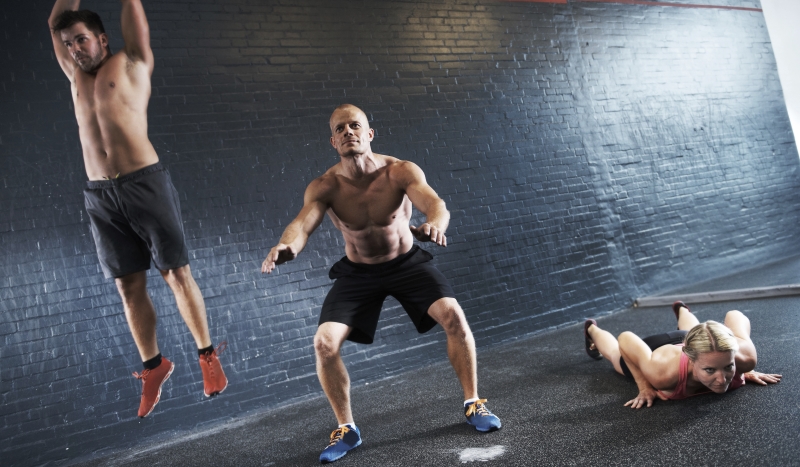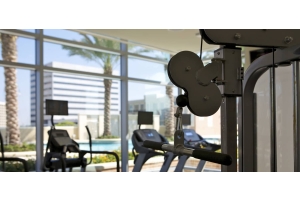Understanding Plyometrics & Plyometric Workouts

Found in varying degrees of the majority of all athletic movements, speed and strength are essential components of fitness. The combination of speed and strength results in power. In order to enhance fitness and performance, coaches and athletes have sought to improve power for many years.
To achieve this power, throughout this century and for many years previously exercises such as jumping, bounding and hopping have been used in a variety of ways to enhance and improve athletic performance. In more recent years, this particular method of training adapted for explosiveness and power alike has been termed plyometrics.
This is based on the understanding that a concentric muscular contraction is stronger if it immediately follows an irregular contraction of the same muscle.
Breakdown a Plyometric Exercise
A plyometric exercise comprises of three phases:
- The eccentric or landing phase, involves the pre-loading, which is when energy is stored, of the agonist muscle group
- The amortization or transition phase is the time between the concentric and eccentric phases. The plyometric effect can be reduced if the energy stored during the eccentric phase dissipates, which is why the transition time needs to be as short as possible
- The concentric phase or take-off phase uses the stored energy in order to increase the force of the movement
During a rapid eccentric contraction the maximum force that a muscle can develop is attained. However, it should be understood that during athletic movements, muscles rarely perform one type of contraction in isolation. When a concentric contraction occurs, this is when a muscle shortens, and is immediately followed by an eccentric contraction, this is when the muscle lengthens, and as a result the force generated can be dramatically increased.
If a muscle is stretched, most of the energy required to stretch it is lost as heat. On the other hand, some of this energy can be stored through the elastic components in the muscle. Only during a subsequent contraction, the stored energy becomes available to the muscle. If the eccentric contraction is not immediately followed by a concentric contraction then this energy boost is lost. The muscle must contract in the shortest time possible to express this greater force. This process is often called the stretch shortening cycle and is the underlying mechanism of plyometric training.
Lower Body Plyometric Exercises
Find examples below that specifically incorporate a Plyo box similar to :

+ Click here to see this 3 in 1
This high intensity exercise of box jumps can be carried out with 6 different 40-100cm boxes.
How to Perform This Exercise (1)
- At the end of the row of boxes, with your feet shoulder width apart, assume a deep squat position
- Either keep your hands behind your head or on your hips
- Jump onto the box and land softly in a squat position on the balls of your feet
- Whilst maintaining the squat position, jump off the box onto the ground, once again landing softly in a squat position on the balls of your feet
- Jump onto the next box, repeat above steps and continue
- Attempt to anticipate the landing and spring up as quickly as you can
- Keep the time your feet touch the ground to the shortest time as possible
How Many?
- One to three sets using 6 to 8 boxes
- Between each set, allow a full recovery
- The height of the box should be in the region of 30-80 cm
- The quality of box jumping is more important and effective than quantity
Another high intensity exercise of depth jumps requires a 40-100cm box.
How to Perform This Exercise (2)
- With your toes close to the front edge, stand on the box
- Step off of the box and drop to land on the balls of both feet
- Attempt to anticipate the landing and spring up as quickly as you can
- Keep the time your feet touch the ground to the shortest time as possible
How Many?
- One to three sets using 6 to 8 boxes
- Between each set, allow a full recovery
- The height of the box should be in the region of 30-80 cm
- The quality of depth jumping is more important and effective than quantity
Upper Body Plyometric Exercises
A variety of drills can be used to make the upper body more explosive, as shown below:
Press Ups & Hand Clap
Press-ups with a hand clap in between is a particularly vigorous way which helps to condition the arms and chest. As the hands arrive on the ground and the chest sinks, the pre-stretch takes place, which is then quickly followed by the explosive upwards action. Similar to other exercises, to get the best training effect it is advised to keep the time in contact with the ground to a minimum.
Medicine Ball
Using a medicine ball is another high-intensity exercise and should only be used following some basic conditioning. Increasing upper body strength, particularly popular with throwers is to lie on the ground face up. A partner then drops the medicine ball down towards the athlete’s chest, who catches the ball in the eccentric phase and then immediately throws it back in the concentric phase.






